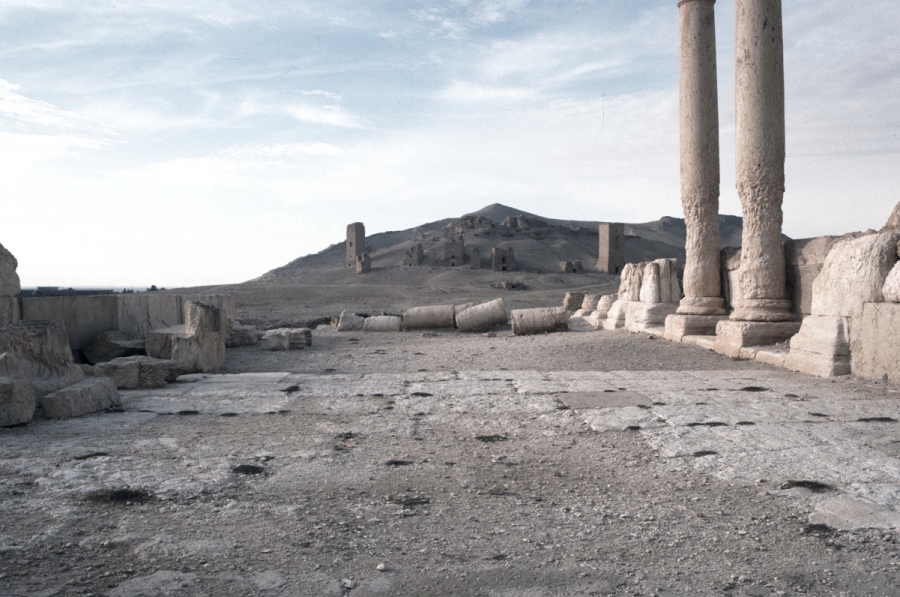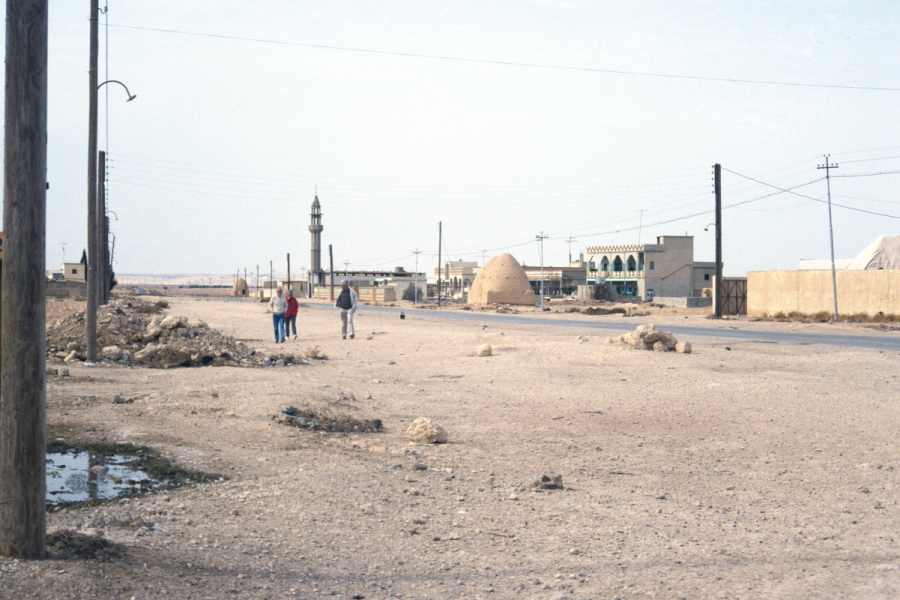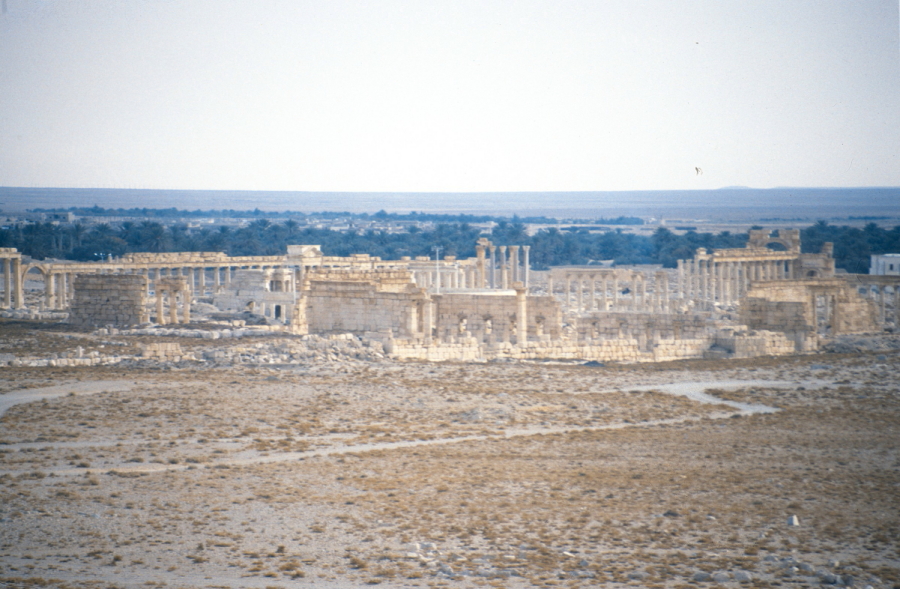Tuesday 30th November 1993 7:30 - 10:00am
A relative lie in this morning. The alarm clock wakes us at 6:45am, just like going to work. We have another busy day ahead. After breakfast we will continue our exploration of ancient Palmyra before hitting the road and undertaking a whistle stop tour of sights on the road to Aleppo.
We have already done so much it seems like ages since we left home but it is still only our second day in Syria, and third day since our arrival in the middle east.
Shortly before 8:00am we are on our way back to the old city of Palmyra. Our knowledgable guide explains that we will be visiting burial sites which represent the three distinct burial customs in Palmyra. We will start in the Valley of Tombs where we will see the tower method and then visit an underground tomb or hypogeum, but first we are visiting the museum.
Our little group follows the guide. I am near the back and struggle to make out what he is saying. It is too dark to take photographs without flash. There are a lot of relief sculptures - funerary art - depicting the deceased, which have been removed from the tombs. Some look almost new but are almost 2000 years old. It is probably all very interesting but I am not following along. Andy is nearer the front and appears to engrossed. I'll ask him later.

We leave the museum for the Valley of Tombs. I'd seen the line of towers in the distance yesterday as we wandered through the colonnades without realising that they were part of an ancient necropolis.

"The man with the keys" lets us in to one of the towers. We stand near the entrance and he tells us that each family, tribe or clan would have a tomb with a curator. The bodies would be slid in around the sides and stacked up. On the first floor, he told us, there was space for eighty one bodies and this tower has four floors. This is fascinating. Recent analysis has shown that some of the burial slots contain more than one body and the experts have even worked out what some of the inhabitants died from, for example skin cancer which was probably caused by their exposure to the sulphurous water.

We are leaving the Tower Tomb and the guide is telling us that sometime in the early 2nd century AD the inhabitants of Palmyra abandoned the Tower Tombs and began to bury their dead in underground tombs. He says it isn't clear why. It may have been cost or fashion under the influence of the Greek traditions.
At the hypogeum we see better preserved frescos, some still with their original colours. I am disappointed not to be able to get pictures. The guide is hurrying us around and it takes me a long time to take photographs with my completely manual camera. In these conditions where the light is changing from bright to shadow I am worried that my pictures will not come out well. When I stop fiddling with the settings on my camera and abandon my attempt to photograph the fresco our guide is explaining that newly discovered hypogea have recently been excavated. Palmyra is an active archeological site and he is excited about the possibility of many more discoveries.
Our guide is a good host and makes us feel welcome and safe in his country. The holiday information pack says that although he has a diploma in archeology, is a member of an archeological committee based in Aleppo and has worked with some of the worlds leading archeologists he is actually an engineer responsible for designing, planning and constructing some of the main highways throughout Syria. Right now his enthusiasm for archeology and what it means for both the past and future of Syria is obvious. There is so much more he would like us to see but the schedule leaves us little time, we will need to be back on the bus in an hour. He tells us where we can see the best example of a temple tomb and leaves us free to explore at our own pace and leisure.

We turn to look out across the ancient ruins of the city. It feels strange to be here. Maybe because we have been visiting tombs, the assortment of columns, some standing, some fallen, remind me of bones, the remains of something that was once living but is now lifeless and entombed in dust and sand. But it isn't dead. Locals are busy selling post cards and souvenirs and cute kids are posing for pictures, cashing in on the newly emerging tourist business. Here and there is evidence of reconstruction. I try to imagine what it will look like when it is finished.
In Bosra we had seen people living, intra-mural, among the ruins and our guide had explained the tensions between those who wanted to clear the area and reconstruct the ancient city and those who thought it should be left to the locals to adapt it and keep it evolving as a living place. People had also lived here, in old Palmyra, building their small houses among the ruins of the former great city until the French moved them out in the 1930s to clear the way for larger scale excavations and reconstruction.
From the road where our bus is parked we can see the edge of the new town, a few houses and shops, but not enough to get any sort of impression about the standard of living of its inhabitants.

As the bus sets off for our next destination someone asks the guide about the local housing. He tells us that people who rent houses from the corporation (how many do?) get 120m2 living space for their family. I compare that to my own house which to me is quite spacious, and decide it is similar. I suppose it depends how big the families are and whether the living space includes any garden. Gardens appear to be important. If what I have seen so far is typical most of the houses in the small towns and villages have small gardens which are well kept, and in the larger towns where most people seem to live in blocks of flats the balconies are festooned with plants. We have passed a number of garden centres and everywhere something will grow, someone has planted something.
